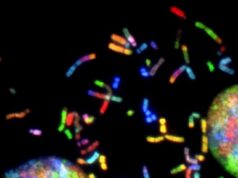Researchers from the Max Planck Institute for Evolutionary Anthropology in Leipzig, Germany, reveal how and when the typical globular brain shape of modern humans evolved. Their analyses based on changes in endocranial size and shape in Homo sapiens fossils show that brain organization, and possibly brain function, evolved gradually within our species and unexpectedly reached modern conditions only recently.
The evolutionary history of our own species can be traced back to fossils from Jebel Irhoud (Morocco) dated to about 300,000 years ago. Last year’s analysis of these fossils by researchers from the Department of Human Evolution at the Max Planck Institute for Evolutionary Anthropology in Leipzig was highlighted as one of the top science stories of 2017 by a diverse range of print and online media. Together with crania from Florisbad (South Africa, 260,000 years old), and Omo Kibish (Ethiopia) dated to 195,000 years ago, the Jebel Irhoud fossils document an early evolutionary phase of Homo sapiens on the African continent. Their face and teeth look modern, however their elongated braincase appears more archaic as in older human species and in Neandertals. In contrast, it is a globular braincase, which characterizes the skull of present-day modern humans together with small and gracile faces.
In a new paper published in Science Advances, members of the same research team now reveal additional surprising findings about brain evolution in Homo sapiens. The paleoanthropologists Simon Neubauer, Jean-Jacques Hublin and Philipp Gunz used micro computed tomography scans to create virtual imprints of the internal bony braincase, so called endocasts that approximate brain size and shape. They used state-of-art statistics to analyze endocasts of various fossils and present-day humans.
Evolution of the parietal lobe and the cerebellum
Neubauer and colleagues document a gradual change within Homo sapiens, from an elongated endocranial shape towards a more globular one. Two features of this process stand out: parietal and cerebellar bulging. Parietal brain areas are involved in orientation, attention, perception of stimuli, sensorimotor transformations underlying planning, visuospatial integration, imagery, self-awareness, working and long-term memory, numerical processing, and tool use. The cerebellum is not only associated with motor-related functions like the coordination of movements and balance, but also with spatial processing, working memory, language, social cognition, and affective processing.
Find your dream job in the space industry. Check our Space Job Board »
The Homo sapiens fossils were found to have increasingly more modern endocranial shapes in accordance with their geological age. Only fossils younger than 35,000 years show the same globular shape as present-day humans, suggesting that modern brain organization evolved some time between 100,000 and 35,000 years ago. Importantly, these shape changes evolved independently of brain size — with endocranial volumes of around 1,400 milliliters, even the oldest Homo sapiens fossils from Jebel Irhoud fell within present-day variation of brain size. “The brain is arguably the most important organ for the abilities that make us human,” says Neubauer. But modern human brain shape was not established at the origin of our species together with other key features of craniodental morphology. Neubauer adds: “We already knew that brain shape must have evolved within our own species, but we were surprised to discover just how recent these changes to brain organization were.”
Evolutionary changes in early brain development
In present-day humans, the characteristic globular shape of the braincase develops within a few months around the time of birth. Philipp Gunz explains, “The evolution of endocranial shape within Homo sapiens suggests evolutionary changes of early brain development – a critical period for neural wiring and cognitive development.” The researchers therefore argue that evolutionary changes to early brain development were key to the evolution of human cognition. Jean-Jacques Hublin, co-author and director of the Department of Human Evolution at the Max Planck Institute in Leipzig, says: “The gradual evolution of modern human brain shape seems to parallel the gradual emergence of behavioral modernity as seen from the archeological record.”
The new findings are in agreement with recent genetic studies that show changes in genes related to brain development in our lineage since the population split between Homo sapiensand Neandertals. They add to the accumulating archeological and paleoanthropological evidence demonstrating that Homo sapiens is an evolving species with deep African roots and long-lasting gradual changes in behavioral modernity, brain organization, and potentially brain function.
Provided by:
Max Planck Society
More information:
Simon Neubauer et al. The evolution of modern human brain shape, Science Advances (2018). DOI: 10.1126/sciadv.aao5961
Image:
Brain shape evolution in Homo sapiens: brain shape of one of the earliest known members of our species, the 300,000 year-old cranium Jebel Irhoud 1 (left). Brain shape, and possibly brain function, evolved gradually. Brain morphology has reached the globularity typical for present day humans suprisingly recently (right).
Credit: MPI EVA/ S. Neubauer, Ph. Gunz (License: CC-BY-SA 4.0)











